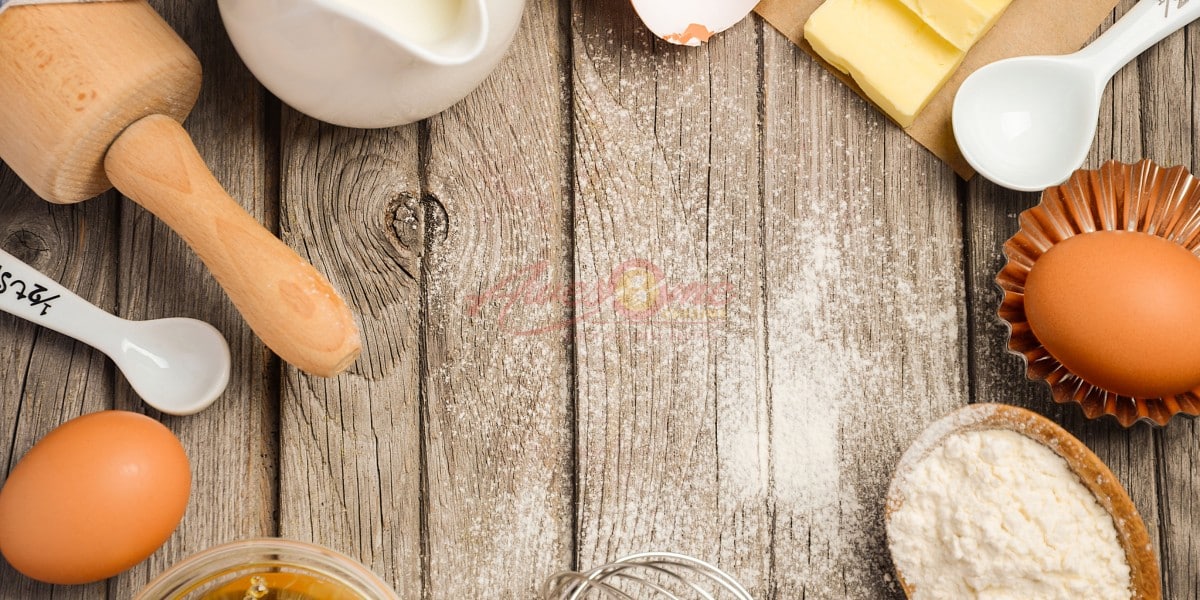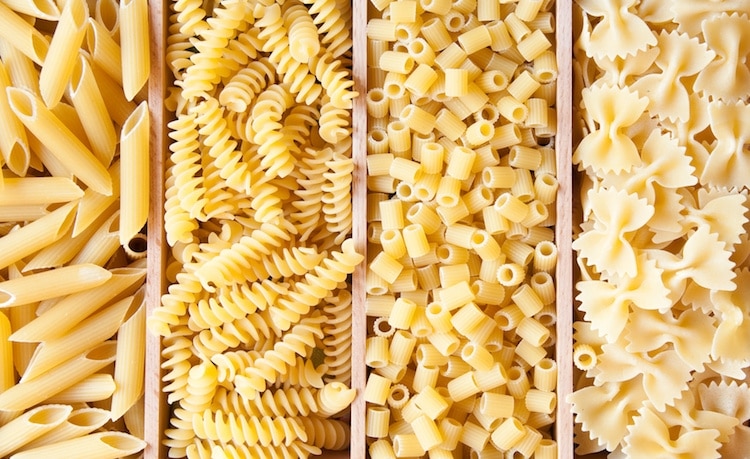Baking a cake is a delightful process that brings joy to both the baker and the lucky individuals who indulge in the final product. However, cake baking can also be challenging, especially when common mistakes are made along the way. From cakes that sink in the middle to dense and crumbly textures, these mishaps can leave even the most experienced bakers scratching their heads in frustration. But fear not, fellow cake enthusiasts! This blog will explore the most common cake-baking mistakes and, more importantly, how to fix and prevent them. So, whether you’re a baking novice or a seasoned pro, read on to discover the secrets of baking perfect cakes every time.

Common Mistakes While Baking Cake
Understanding Cake Baking Mishaps
To effectively fix and prevent cake-baking mistakes, it’s essential first to understand the science behind the process. Cake baking is not just mixing ingredients and popping the batter in the oven. It involves a precise chemical and physical process, and understanding the science of cake baking is vital to achieving successful outcomes.
The Science Behind Cake Baking
Cake baking, at its core, is a delicate balance of ingredients and techniques that, when combined, create a fluffy, moist, and delicious cake. The chemical reactions during baking impact the final product, influencing its texture, taste, and rise. Understanding the scientific principles that govern cake baking can help us avoid common mistakes and achieve consistent baking success.
Common Cake Baking Problems
Before we delve into the specific mistakes, let’s step back and identify the common cake-baking problems many of us encounter in the kitchen. These problems range from cakes that sink in the middle to dense, crumbly textures. Recognizing these common cake baking problems is the first step in improving your baking skills and ensuring consistently perfect cakes.
The Mystery of Sinking Cakes
One of the most frustrating cake-baking mistakes is when a cake sinks in the middle, leaving a sunken, dense, and undercooked centre. This can happen to the most experienced bakers, but fear not; the mystery of sinking cakes can be solved.
Overmixing as a Cause
Overmixing the cake batter is a common cause of sinking cakes. When ingredients are overmixed, excess air is incorporated into the batter, creating air bubbles that expand in the oven. As the cake bakes, these air bubbles burst, causing the cake to collapse in the middle. To avoid this, mix the ingredients until they are combined, and avoid excessive mixing.
The Role of Oven Temperature
Another significant factor in the occurrence of sinking cakes is oven temperature. If the oven temperature is too hot, the cake may rise too quickly, leading to a dome shape that eventually collapses in the centre. On the other hand, if the oven temperature is too low, the cake may not rise properly, resulting in a dense texture. Monitoring and controlling your oven temperature is crucial to avoid sinking cakes. Use an oven thermometer to ensure your oven is at the right temperature, and avoid opening the oven door too frequently, as this can cause a rush of cold air and impact the baking process.
Tackling Dense Cakes
A dense cake can disappoint, lacking the light and fluffy texture we crave in a perfect cake. But fear not; there are ways to tackle this common cake-baking problem and achieve a light, airy texture in your cakes.
The Effect of Improper Measurement
One of the most common reasons for dense cakes is improper measurement of ingredients. Baking is a science, and precise measurements are crucial to achieving the right balance of ingredients. Too much flour, baking powder, or other dry ingredients can weigh the cake batter down, resulting in a dense texture. To avoid this, use measuring cups accurately and level off the ingredients to ensure the right amount in your recipe.
Importance of Fresh Leavening Agents
Leavening agents, such as baking powder and baking soda, play a crucial role in cake baking, helping the cake rise to a light and fluffy texture. However, these leavening agents can lose their potency over time, especially when exposed to air and moisture. Using fresh leavening agents is essential to avoid dense cakes. Check the expiration date of your baking powder and soda, and if they are past their prime, replace them to ensure a perfect rise in your cakes.
Dealing with Crumbly Cakes
Crumbly cakes can be a real challenge, making it difficult to slice, serve, and enjoy your cake to the fullest. But fear not; there are ways to address this common cake-baking problem and achieve a cake with a moist and cohesive texture.
The Balance Between Liquid and Dry Ingredients
The balance between liquid and dry ingredients is crucial in cake baking, and getting it right can prevent crumbly cakes. Too much flour in the cake batter can absorb too much liquid, resulting in a dry texture. On the other hand, too much liquid can make the batter too wet, leading to a cake that falls apart quickly. Use measuring cups accurately to avoid excess flour in the cake batter, and follow the recipe directions to ensure the right balance of liquid ingredients.
The Danger of Overbaking
Overbaking your cake can also contribute to a crumbly texture. When the cake is left in the oven for too long, the excess heat dries out the cake, making it dry and crumbly. To avoid this:
- Use a toothpick test to check if the cake is ready.
- Insert a toothpick into the centre of the cake, and if it comes out clean or with a few crumbs, the cake is made. If it comes out wet, the cake needs more time to bake.
- Adjust your oven temperature to avoid overbaking your cakes in the future, and follow the recipe directions to ensure the perfect baking time.
The Dilemma of Unrisen Cakes
When baking a cake, using the correct temperature of liquid ingredients is crucial to ensure the cake rises appropriately. Avoid cold ingredients, as they can prevent the cake from growing. Avoid a rush of cold air to the cake batter, which can also lead to an unrisen cake. Additionally, leavening agents like baking soda are essential to ensure the cake rises. Thoroughly mixing the cake batter helps to avoid an unrisen cake as well. Paying attention to these factors will contribute to your cake’s perfect texture and rise.
The Crucial Creaming Process
Creaming the butter and sugar until fluffy is the first step to achieving your cake’s light, smooth texture. Use a stand mixer to ensure even incorporation and to avoid a more extended time spent creaming. Fresh fruit can be incorporated into the batter for a layered cake, reducing the need for excess sugar. Ensuring exact measurements of the ingredients significantly impacts the perfect texture in the middle of your cake.
Why Room-Temperature Ingredients Matter
Room-temperature ingredients are crucial for baking. Using room-temperature butter prevents the cake from becoming too dense. At the same time, cold ingredients keep the batter from being too wet. Avoiding cold air ensures a light texture in the cake batter. The right temperature of liquid ingredients contributes to the perfect surface, and allowing the cake ingredients to stand before baking prevents a dense cake.
Addressing Domed and Cracked Cake Tops
Addressing domed and cracked cake tops is crucial to achieving a perfect texture. To prevent doming, use a baking strip around the pan to insulate and distribute heat evenly. Reduce the baking temperature for cracked tops and ensure the cake is placed in the middle of your oven. A longer time in the range at a lower temperature can significantly impact the outcome. The good news is that these issues have easy fixes.
Avoiding Overfilled Cake Pans
When baking, ensure the cake pan size fits the batter to prevent overflow. Leave space in the pan and use a bundt cake pan for excess batter. Grease the pan to prevent sticking and avoid layering batter. These steps lead to a perfect texture in the middle of your cake. The good news is that these mistakes have easy fixes and can significantly impact your baking.
Regulating Your Oven’s Heat
Regulating your oven’s heat is crucial for baking success. Adjust the temperature to avoid hot spots in the cake, and use the oven light to monitor the baking process. Preheat the oven correctly to ensure the right temperature for baking, and keep the oven door closed to prevent a sunken cake. Using an oven thermometer helps regulate the oven temperature, preventing dense cakes. This simple step dramatically impacts achieving the perfect texture in your cakes.
Other Precautions for Perfect Cakes
Ensuring the proper baking pan is crucial for a perfect cake. Layer cakes require even more precision. Not adding excess flour or sugar is the first step to preventing common mistakes while baking cake. A fluffy texture in the middle of your cake indicates a longer time in the oven. This is good news – it’s an easy fix and results in a perfect texture.
The Right Way to Use Substitutions
To avoid a dense cake, it’s essential to use the proper cake mix substitutions and exact measurements of the ingredients. Incorporating purpose flour prevents a drier texture while using a stand mixer ensures a perfect blend. It allows the cake to cool completely after baking and significantly impacts its surface. The good news is that you can enjoy a layered cake with a fluffy texture with these easy fixes.
The Importance of Weighing Ingredients
Weighing your ingredients is crucial for the accuracy and consistency of your cake recipe. Using a kitchen scale can prevent common baking mistakes, ensuring you achieve the perfect texture and taste. Precise measurements significantly impact the outcome of your cake, and employing a kitchen scale is the first step towards creating a flawless, layered cake.
How to Properly Prepare Your Cake Pan?
Properly preparing your cake pan is essential for successful baking. Prevent sticking using parchment paper and ensure easy cake removal by greasing the pan. An even layer of flour will avoid a dry texture, while lining the pan with parchment paper aids in an easy release-of grease and flour for a perfect cake shape.
The Need for Complete Cooling Before Icing
Allowing your cake to cool entirely is crucial for a flawless cake presentation. Complete cake cooling prevents a soggy cake bottom. It ensures that the icing sets appropriately, significantly impacting the cake’s texture. Additionally, cooling your cake before icing prevents the icing from melting and running off, contributing to a perfect texture and appearance. This step is essential for layered cakes, pound cakes, and cake pops, but the good news is that it’s an easy fix with just a longer time.
Frequently Asked Questions
What are the common faults in cake making?
Common faults in cake making include:
- Over-mixing the batter.
- I was using expired ingredients.
- I was opening the oven frequently.
- Do not allow the cake to cool before frosting.
These mistakes can lead to a rigid and dense cake, affecting its texture and taste.
What happens when your cake comes out perfect, but you run into an issue with decorating?
Decorating mistakes can occur even with a flawlessly baked cake. If your frosting is too runny, try chilling it in the fridge before using it. Conversely, if your frosting is too thick, add a few drops of milk or cream to thin it out. And remember, if you make a mistake while decorating, don’t panic! You can always scrape off the frosting and start fresh.
Why is My Cake Dry?
There are several reasons why a cake can turn out dry. Overbaking or using too much flour can be the culprit, as well as not adding enough liquid or fat. To fix a dry cake, try brushing it with simple syrup or adding a layer of frosting or filling. To prevent a dry cake in the future, follow the recipe closely and measure ingredients accurately.
Why is My Cake Raw in the Middle?
Is your cake coming out raw in the middle? There could be a few reasons for this. Your oven temperature might be too low or uneven, resulting in improper baking. Overfilling the cake pan can also prevent heat from reaching the centre. Additionally, taking the cake out of the oven too early can leave it undercooked. To fix this issue, try increasing the oven temperature slightly and use a toothpick to check if the cake is made before removing it.
How can you tell if a cake is overbaked or underbaked?
Its dry texture and excessive browning can identify an overbaked cake on the edges. On the other hand, an underbaked cake may be moist, dense, and have batter sticking to a toothpick inserted in the centre. To avoid such issues, follow the recipe’s specified baking time and temperature, and check for doneness by inserting a toothpick or cake tester into the centre, ensuring it comes out clean.
Conclusion
In conclusion, baking a perfect cake requires attention to detail and understanding the science behind the process. By avoiding common mistakes such as overmixing, improper measurement, and using fresh ingredients, you can prevent issues like sinking, dense, crumbly, and unrisen cakes. It’s also essential to consider factors like creaming, room-temperature components, and regulating oven heat to address domed and cracked cake tops. Additional precautions include using the correct substitutions, weighing ingredients, and adequately preparing your cake pan. Remember, practice makes perfect, and with time and experience, you’ll be able to troubleshoot and fix any cake-baking mishaps. So, keep experimenting, learn from your mistakes, and enjoy the delicious results!












